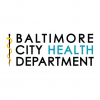Baltimore City Health Commissioner Dr. Wen Commends the Maryland General Assembly for Passing Legislation to Address the Opioid Epidemic
Tuesday Apr 11th, 2017
FOR IMMEDIATE RELEASE
BALTIMORE, Md. (April 11, 2017) – Baltimore City Health Commissioner Dr. Leana Wen today issued the following statement in response to the Maryland General Assembly’s passage of two bills, the Heroin and Opioid Prevention Effort (the HOPE Act, SB967/HB1329) and the Heroin and Opioid Education and Community Action Act of 2017 (the Start Talking Maryland Act, SB1060/HB1082), which improve access to treatment and education in response to the ongoing opioid epidemic:
“We commend the Maryland General Assembly for taking action to save lives in Maryland by adopting a public health approach to the overdose crisis. The number of heroin-related deaths in Maryland more than tripled between 2010 and 2015. In 2015, there were 260 heroin-related overdose deaths in Baltimore City, almost double the number in the next highest jurisdiction, Baltimore County, which had 134 deaths. These numbers continue to climb.
“The legislation supports the evidenced-based approach that Baltimore City has taken to address this epidemic: saving lives by providing naloxone—the opioid overdose reversal medication—to every resident, improving access to treatment, and eliminating stigma through education. We are proud to work with our state partners to scale-up these efforts.
“Specifically, we applaud the following nine provisions included in this package:
- Eliminating the training requirement for those obtaining naloxone under a standing order. The previous law created burdensome paperwork requirements that detracted from our outreach workers’ ability to reach more residents with the life-saving medication. Now, naloxone will essentially be over-the-counter, which is a best practice already adopted by our neighboring states in Virginia and Pennsylvania, among others.
- Requiring the state to establish a crisis treatment center that is open 24 hours a day, 7 days a week. Across the country, only 1 in 10 people facing the disease of addiction accesses any treatment. While having one additional treatment option in Maryland is a good start, it is not nearly sufficient; we hope that there will be further consideration for at least 10 treatment centers across the State. Increasing the availability of on-demand treatment is critical and builds upon the work in Baltimore City starting a Stabilization Center, the first step to a 24/7 Behavioral Health “ER.”
- Establishing a statewide health care hotline as funding is available. In Baltimore City, we established a 24/7 phone hotline (410-433-5175) that receives an average of 1,000 calls per week from individuals and their loved ones seeking help for addiction and mental health needs. Given the volume we have seen, we know that this is a much-needed and valuable resource.
- Expanding access to buprenorphine, a type of medication-assisted treatment for opioid addiction. There are three medications that are FDA-approved to treat opioid addiction. Patients are severely limited because of lack of providers who are trained to prescribe one of them, buprenorphine (also called Suboxone). Health centers and systems will now be required to have providers on staff who are able to prescribe the medication, increasing the likelihood that someone who is addicted to opioids can obtain treatment.
- Increasing access to naloxone by requiring the state to establish guidelines for the co-prescription of medication. Every patient who receives opioids has the potential to overdose. Naloxone will save that person’s life, and so should be made available to the patient at the time they receive opioids.
- Increasing hospital involvement to improve access to treatment. Under the law, all hospitals will be required to have discharge protocols for patients who have overdosed or have a substance use disorder. The bill also increases accountability by requiring the Maryland Hospital Association to review the protocols to ensure that best practices are followed for screening and treatment of patients with addiction.
- Allowing Overdose Fatality Review Committees the opportunity to review non-fatal overdose cases. Surviving an overdose is one of the biggest indicators that a person will die from a future overdose. Looking more closely at non-fatal overdose cases will provide a more accurate picture of the trends that contribute to fatal overdoses and the opportunities to intervene and save lives.
- Studying ways to improve access to drug courts, which help to connect individuals facing charges related to substance use with treatment. This complements Baltimore City’s Law Enforcement Assisted Diversion (LEAD) initiative, which gives those charged with drug-related crimes an opportunity to receive treatment instead of entering the criminal justice system.
- Increasing funding for behavioral health services. Providing more resources will improve access to treatment, which we know is inadequate.
“The General Assembly’s passage of these policies demonstrates a recognition that addiction is a disease and that recovery is possible. We urge all of our elected leaders to support this public health approach to the epidemic of opioid addiction and swiftly approve SB967/HB1329 and SB1060/HB1082. We know what works to resolve this crisis; we now need the policies and the funding to do so.
“For the many hundreds of thousands across Maryland facing the disease of addiction, and for the loved ones of those who have already lost their lives to this disease, this could not be more urgent.”
